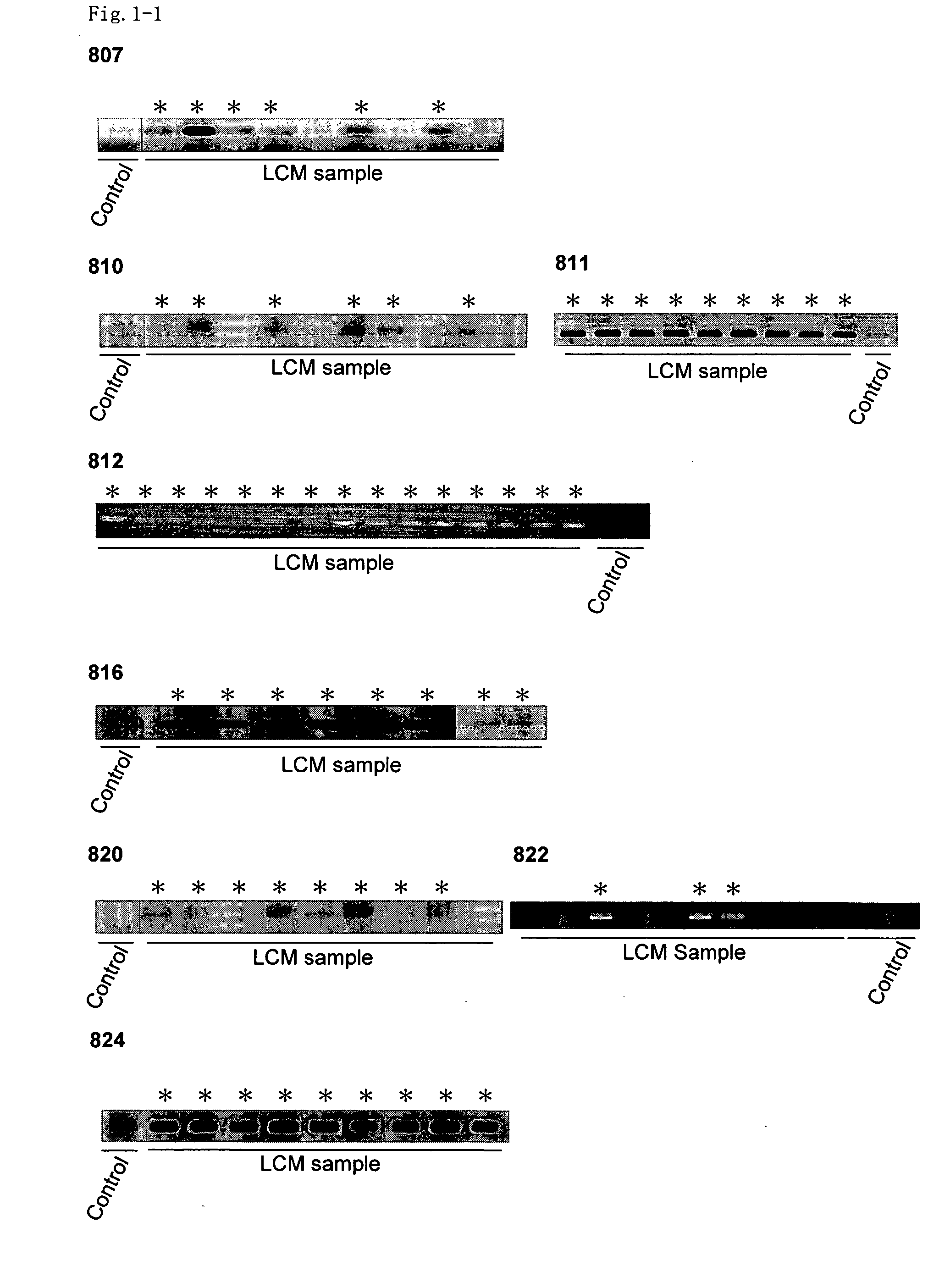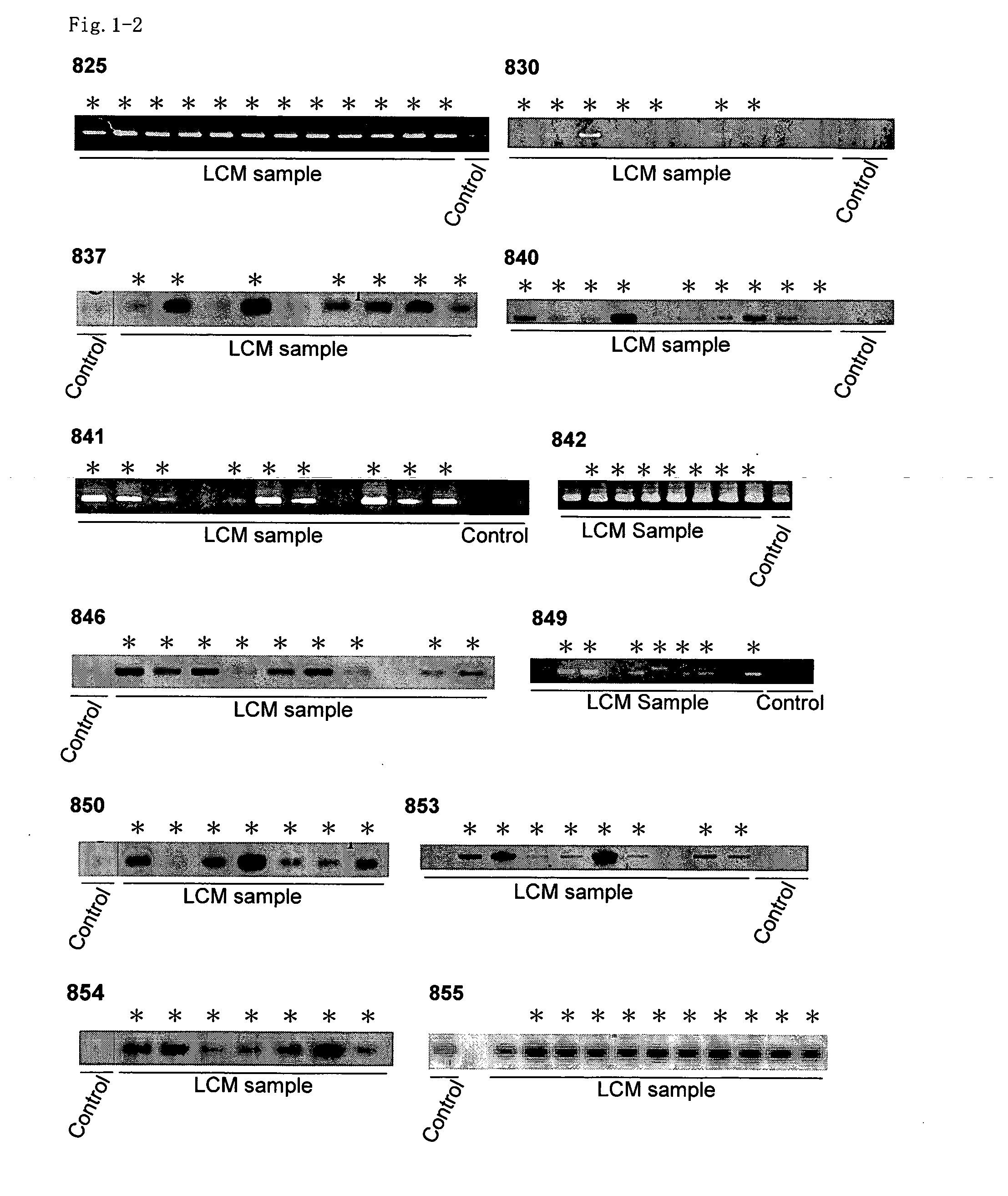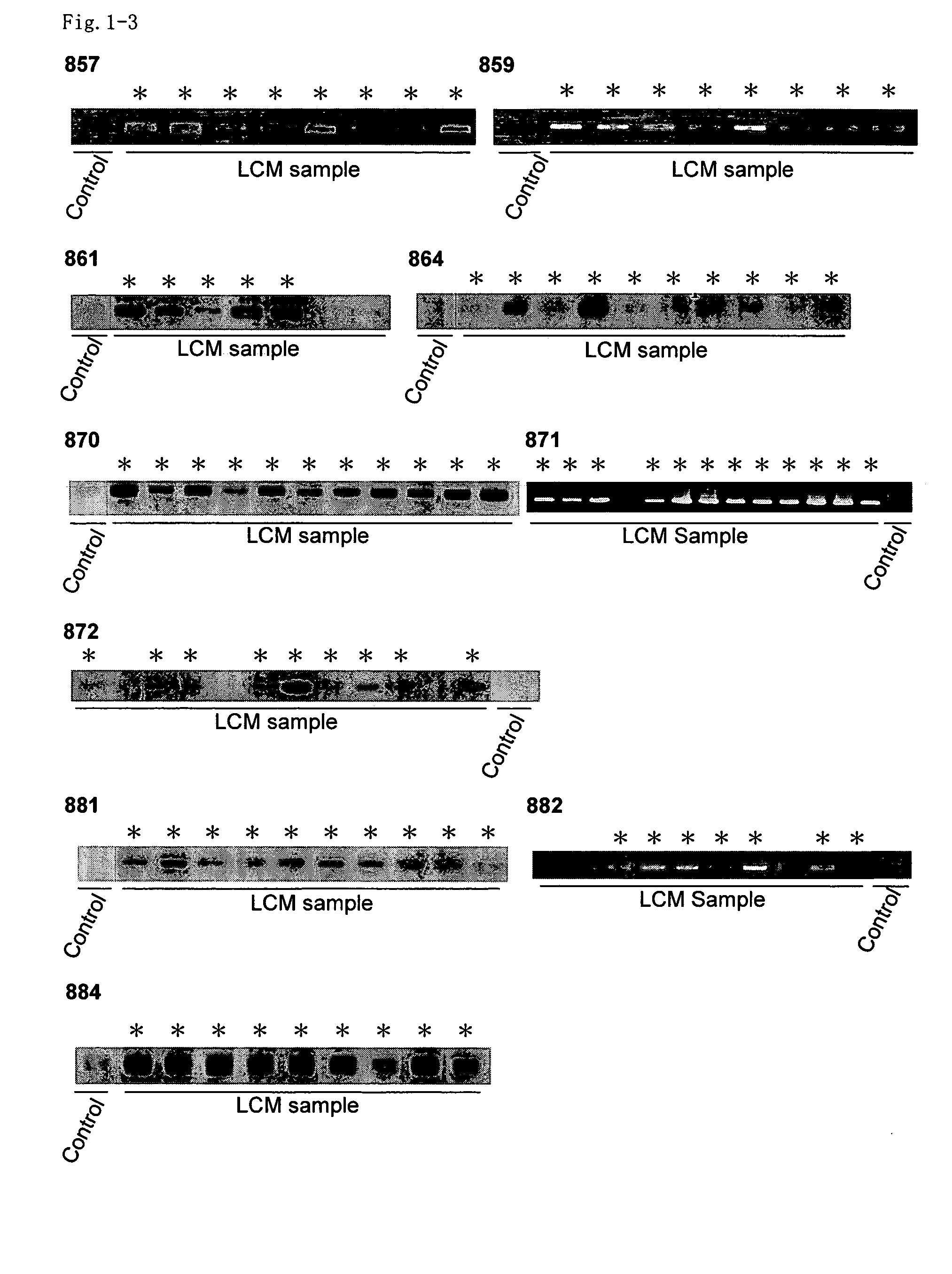Method for diagnosing non-small cell lung cancers
- Summary
- Abstract
- Description
- Claims
- Application Information
AI Technical Summary
Benefits of technology
Problems solved by technology
Method used
Image
Examples
example 1
General Methods
(1) Patients and Tissue Samples
[0316] Primary lung cancer tissues were obtained with informed consent from 37 patients (15 female and 22 male of 46 to 79 years; median age 66.0) who underwent lobectomy. Clinical information was obtained from medical records and each tumor was diagnosed according to histopathological subtype and grade by pathologist; 22 of the 37 tumors were classified as adenocarcinomas, 14 as SCCs and one as adenosquamous carcinoma. The clinical stage for each tumor was judged according to the UICC TNM classification. All samples were immediately frozen and embedded in TissueTek OCT medium (Sakura, Tokyo, Japan) and stored at −80° C.
(2) Cell Lines
[0317] The following twenty (20) human NSCLC cell lines were used in these examples: lung ADC; A549, LC174, LC176, LC319, PC14 / PE6, NCI-H23, NCI-H522, NCI-H1650, NCI-H1735, NCI-H1793, PC-3, PC-9, PC-14, SW-1573, lung SCC; RERF-LC-AI, SK-MES1, SK-LU-1, SW-900, a brochio-alveolar cell carcinoma (BAC); NC...
example 2
Identification of Genes with Clinically Relevant Expression Patterns in Non-Small Cell Lung Cancer Cells
[0335] A two-dimensional hierarchical clustering algorithm was applied to analyze similarities among samples and genes, using data obtained from the expression profiles of all 37 NSCLC samples. Genes were excluded from further analysis when Cy3- or Cy5-fluorescence intensities were below the cut-off value, as described previously (Yanagawa et al., Neoplasia 3: 395-401 (2001)) and selected for which valid values could be obtained in more than 95% of the cases examined. Genes with observed standard deviations of <1.0 were also excluded. 899 genes that passed through this cutoff filter were further analyzed.
[0336] In the sample axis (horizontal), 39 samples (two cases were examined in duplicate to validate the reproducibility and reliability of the experimental procedure) from 37 cases were clustered into two major groups based on their expression profiles. The dendrogram represent...
example 3
Identification and Characterization of Molecular Targets for Inhibiting Non-Small Cell Lung Cancer Cell Growth
[0338] To identify and characterize new molecular targets that regulate growth, proliferation and survival of cancer cells, antisense S-oligonucleotide technique was applied to select target genes as follows.
(1) Identification of Full-Length Sequence
[0339] The full-length sequence of the genes that showed high signal intensity ratios of Cy5 / Cy3 on the microarray was determined by database screening and 5′ rapid amplification of cDNA ends using Marathon cDNA amplification kit (BD Biosciences Clontech, Palo Alto, Calif., USA) according to the supplier's recommendations. A cDNA template was synthesized from human testis mRNA (BD Biosciences Clontech) with a gene-specific reverse primer and the AP1 primer supplied in the kit. Nucleotide sequences were determined with ABI PRISM 3700 DNA sequencer (Applied Biosystems, Foster City, Calif., USA) according to the manufacturer's i...
PUM
| Property | Measurement | Unit |
|---|---|---|
| Fraction | aaaaa | aaaaa |
| Fraction | aaaaa | aaaaa |
| Fraction | aaaaa | aaaaa |
Abstract
Description
Claims
Application Information
 Login to View More
Login to View More - R&D
- Intellectual Property
- Life Sciences
- Materials
- Tech Scout
- Unparalleled Data Quality
- Higher Quality Content
- 60% Fewer Hallucinations
Browse by: Latest US Patents, China's latest patents, Technical Efficacy Thesaurus, Application Domain, Technology Topic, Popular Technical Reports.
© 2025 PatSnap. All rights reserved.Legal|Privacy policy|Modern Slavery Act Transparency Statement|Sitemap|About US| Contact US: help@patsnap.com



